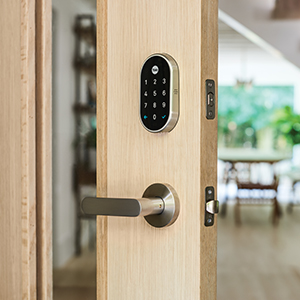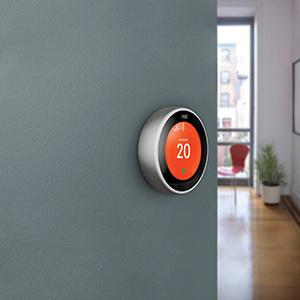Old House, New Tricks
The latest smart-home gadgets can take any home from antiquated to automated
by Christina Symons | BCAA Magazine, Fall/Winter 2019Have you ever wished for a futuristic new home, where the lights turn on and off automatically, the doors lock and unlock remotely and the fridge messages you reminders to buy milk? While once you had to heavily rewire or peel back walls to retrofit this type of technology, homeowners can virtually plug and play today.
“The latest smart-home technology helps make your home more convenient, secure and energy-efficient, saving money and reducing your home’s carbon footprint,” says Andaleeb Dobson, Vice-President of Merchandising and Supply Chain at The Source.
Smart-home gadgets will work on their own through a proprietary app, or you can integrate their functionality – and add voice control – with digital assistants and home hubs such as Amazon Echo and Google Nest. “This way, you can make them work together. For example, you could set up your lights to go on if your smoke detector goes off,” says Dobson.
To decide which platform is best for your home, talk to a smart-home tech expert like those on hand at The Source before you invest, she advises. “It can really help to show you the connectivity, not just of what you’re buying, but also how the devices can connect and the compatibility you need to look for in items purchased down the road,” says Dobson. If you do wind up with smart-home devices that run on different platforms or protocols, there are third-party hubs from companies such as SmartThings and Wink that can centralize control and get them all talking.
These are the main categories of smart- home technology on the market today:

Smart lighting and plugs
Smart lightbulbs give you the power to switch on or off your lights, change their colour and adjust brightness remotely. You can program different lighting scenarios, or have lights ramp up or down automatically as you wake or prepare to sleep – saving energy and adding security in your absence.
Smart plugs boost the IQ of regular lamps and electrical devices by adding remote switching and programming. While smart plugs and bulbs typically install hassle-free in an older home, smart light switches need to be hardwired into an electrical box.
Smart thermostats
Smart thermostats such as the Nest Learning Thermostat and Ecobee SmartThermostat allow you to adjust your home’s temperature remotely, or pre-program a schedule. Working seamlessly with the majority of furnaces and heating-cooling systems, many adapt to homeowners’ behaviour over time, adjusting automatically to save even more energy. Some older homes don’t have continuous-power wires running to the thermostat outlet, so minor rewiring may be in order, depending on the power needs of your new device.
Smart appliances
Fridges, washers, ovens, dryers, dishwashers, microwaves and nearly every type of home appliance come in digitized and Wi-Fi-enabled versions, capable of reacting and notifying you about issues, cycles, power usage and more. You can even troubleshoot mechanical problems. Some smart refrigerators are also video-enabled, allowing you to see inside and determine your grocery list from your mobile device.

Smart water-leak detectors
One way to protect a home – especially one with older appliances – from flooding and water damage is to install smart water sensors in susceptible places, such as near washing machines, toilets, water lines or hot-water heaters. These gadgets sound a loud alarm, and also connect to Wi-Fi to alert you remotely, if they sense a leak. Some also detect freezing, and stream up-to-date humidity and temperature readings.
Smart doorbells
These devices replace your standard doorbell, sending a live-video feed with two-way audio to your mobile device. “So whether you’re home or not, if someone comes to your door, you can speak to them,” says Dobson. Note: to work properly, most smart doorbells require a power source supplying 16 to 24V, so some old-school doorbell wires may need upgrading.
Smart locks
There are many types of smart door locks: some include a new handle set, while others operate with a deadbolt and keypad; creating key-free, fingerprint, fob or remote access to your home via an app. You can activate locks to let in a repair professional, or double-check that you locked the doors after you’ve left home. Typically battery-powered, these devices usually don’t necessitate electrical upgrading, but the slots on older doors may need retrofitting.
Smart security systems
Allowing you to monitor the exterior or interior of your home remotely, these devices are relatively budget-friendly, compared to hiring a dedicated security company. Smart features include Wi-Fi video monitoring, night vision, motion detection, door and window activation, and two-way voice capability. Security breaches result in an alert sent directly to your mobile device. Some systems also offer third-party monitoring.
One final precaution: whenever you’re installing a new piece of technology that requires hardwiring, or modification of your power supply, bring in an electrician to handle the task safely. Smart home, smart homeowner.
Photo credits: Stocksy, Philips, Google, Samsung, Yale.

MEMBERS SAVE
With BCAA Home Insurance, a safe home can result in savings. Plus, BCAA Members save up to 20%. bcaa.com/home








